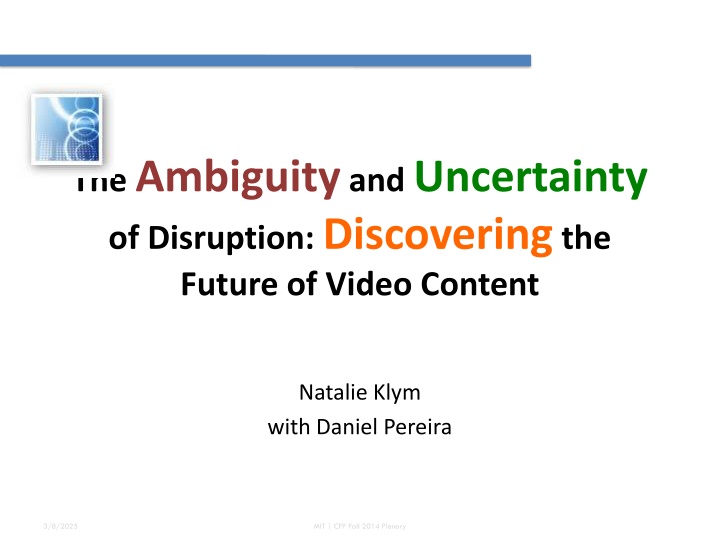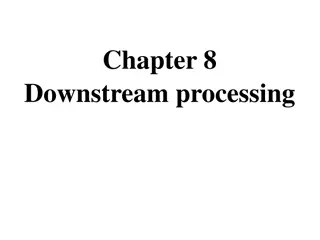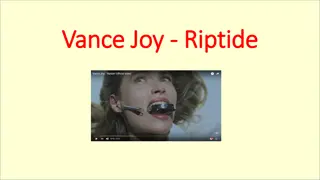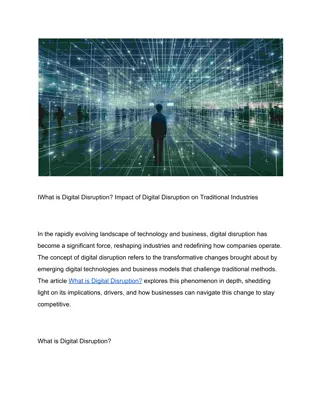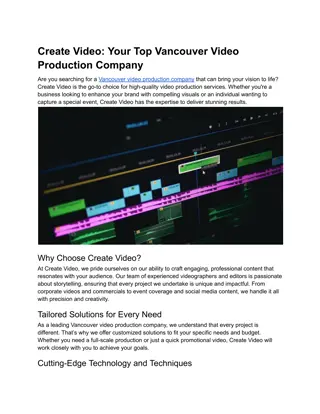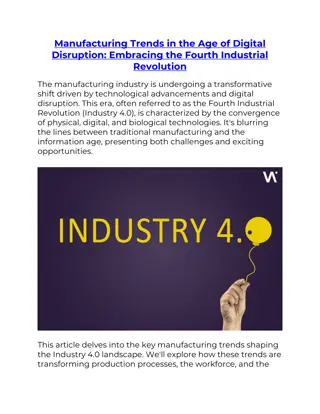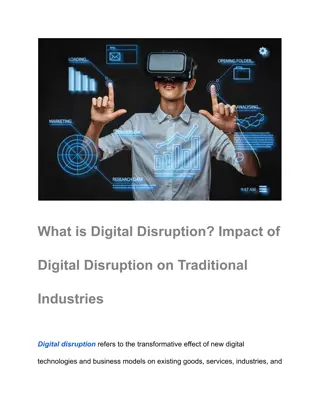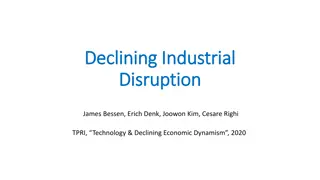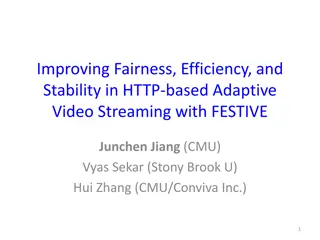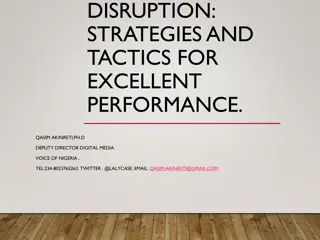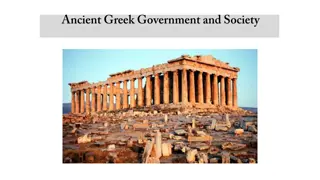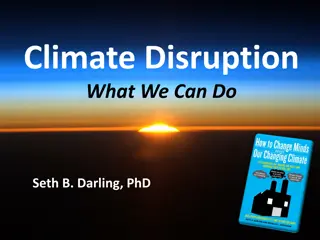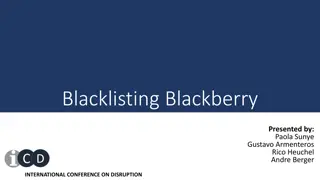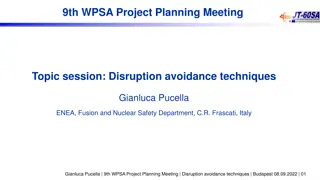Disruption Dynamics in Video Content Future
Uncertainty and ambiguity characterize the evolving video content landscape, with emerging markets and new uses challenging traditional industry norms. Explore the impact of disruption on production, distribution, and the quality versus innovation dynamic.
Download Presentation

Please find below an Image/Link to download the presentation.
The content on the website is provided AS IS for your information and personal use only. It may not be sold, licensed, or shared on other websites without obtaining consent from the author.If you encounter any issues during the download, it is possible that the publisher has removed the file from their server.
You are allowed to download the files provided on this website for personal or commercial use, subject to the condition that they are used lawfully. All files are the property of their respective owners.
The content on the website is provided AS IS for your information and personal use only. It may not be sold, licensed, or shared on other websites without obtaining consent from the author.
E N D
Presentation Transcript
The Ambiguity and Uncertainty of Disruption: Discovering the Future of Video Content Natalie Klym with Daniel Pereira 3/8/2025 MIT | CFP Fall 2014 Plenary
Disruption is confusing Industry disruption vs experience disruption New uses are ambiguous Emerging markets are uncertain So plan for learning and discovery vs execution 3/8/2025 MIT | CFP Fall 2014 Plenary
The future of video content? Video is exploding. It s short-sighted to think that what we watch is going to remain stable. Online video was born of the computing and Internet industry and culture, a decade before Netflix started streaming and long before YouTube existed. New media and interactive CD-ROMS were different. They failed. Big media companies made that sh*t up. YouTube and Twitch that s pure user-driven innovation. Twitch now generates more traffic than Hulu. Who cares about HBOGo, or HBO a la carte, or HBO on the moon! If you want to know the future of video, look at YouTube, look at Twitch. Netflix is just cable TV over a different pipe to a wider range of devices. You don t want to inherit the legacy of TV. 3/8/2025 MIT | CFP Fall 2014 Plenary
The original research questions (2010) The content divide: Most of the high-quality, premium (e.g., HBO, live sports) content is locked in the incumbent ecosystem. The assumption was that you needed high-quality, premium content to compete. The early cord cutters were going back to cable. How will the content landscape change? What are the implications regarding disruption dynamics? Production Distribution Incumbents Premium content MVPDs (cable, satellite, telco) OVDs Entrants Online video (YouTube, Netflix, the Web ) 3/8/2025 MIT | CFP Fall 2014 Plenary
A framework: Quality vs Innovation The heart of disruption dynamics Quality: improvements on existing product attributes based on the traditional technology Innovation: the introduction of new product attributes based on the new technology The classic disruption story: The entrants early products are typically lower in quality but have new attributes that are valuable to the new customers. Performance Innovation Time 3/8/2025 MIT | CFP Fall 2014 Plenary
A framework: Quality vs Innovation How will the content landscape change? What are the implications re disruption dynamics? Production Distribution Incumbents High-Quality content MVPDs Innovative & low-quality content OVDs Entrants 3/8/2025 MIT | CFP Fall 2014 Plenary
A framework: The symbiotic relationship between content and conduit There s a complex (and continuous) interplay between the characteristics of the conduit* and the content that is distributed Conduit = networks + devices (Latin root means to bring together ) Content Conduit Properties? Technology Business models Economics Behavioral/cultural Attributes? Performance metrics? 3/8/2025 MIT | CFP Fall 2014 Plenary
Historical context Online video represents the third wave of programming NETWORK TV CABLE TV ONLINE VIDEO Hyper-niche appeal Hyper-edgy, risky Authentic, engaging Social User-generated Semi-pro Unconventional narrative structures Multiple formats (short-continuous) Mass appeal Conventional Brand-safe 30-60 minutes Niche appeal Edgy, risky subject matter and style 3/8/2025 MIT | CFP Fall 2014 Plenary
The shift from network to cable TV As cable TV matured Quality improved Higher production values (budgets) Higher ratings Higher number of awards Quantity and diversity of titles It became more innovative More channel capacity fragmented audiences Less restricted by decency regulations and less reliance on ad dollars (pay TV channels) more creative freedom attracts creative talent film/tv hierarchy reverses (TV as the new novel) 3/8/2025 MIT | CFP Fall 2014 Plenary
The shift from network to cable TV Demand for network television declined Percentage of households watching broadcast networks 90% 1980 65% 1990 58% 2000 46% 2005 almost 50% since 1980 3/8/2025 MIT | CFP Fall 2014 Plenary
The shift from cable TV to online video? The original research questions (2010) The content divide: Most of the high-quality, premium (e.g., HBO, live sports) content is locked in the incumbent ecosystem. The assumption was that you needed high-quality, premium content to compete. The early cord cutters were going back to cable. How will the content landscape change? What are the implications regarding disruption dynamics? 3/8/2025 MIT | CFP Fall 2014 Plenary
The shift from cable TV to online video? More traditional premium content is entering the online ecosystem The quality (and quantity) of native online content is increasing There is increasing demand for innovative content 3/8/2025 MIT | CFP Fall 2014 Plenary
Traditional premium content is entering the online ecosystem Netflix to become "the exclusive U.S. subscription television service" for Disney's new releases starting in 2016 (outbid Starz) HBO/Amazon Instant Video deal for shows that are more than three years old and not limited by syndication deals on cable (i.e. Sex and the City, Entourage and Curb Your Enthusiasm. Seinfeld (Sony)/Netflix: Talks are ongoing for Seinfeld to be made available on Netflix, which would mark the arrival of the show with the most profitable syndication deal in traditional TV history. Weinstein Company/Netflix: The deal, struck in 2013, gives Netflix the rights to show all movies released by Weinstein Co. and its subsidiary, Dimension Films, before they appear on pay-TV channels. 3/8/2025 MIT | CFP Fall 2014 Plenary
The quality (& quantity) of native online content is increasing As of Q314, Total long-term budget for original content production (YouTube, Netflix, Hulu, Amazon Prime) = $1.85B $1.1B for original programming in 2013. House of Cards launched in 2012, starring and directed by A-List Hollywood talent and met with audience and critical success. $100M Investment in channels niche original programming based on a curation model. YouTube stars are more popular than Hollywood celebrities among U.S. teenagers. (Disney bought Maker Studios for $950M in 2014.) With a $500M content budget in 2012, Hulu initially focused on original documentary series. In January 2012, first original script-based series is announced the 13-episode Battleground. Q314, $100M budget for original programming up significantly from Q214. Six full series put into production in the spring of 2014. Ten pilots are also in the works. July 2014, Microsoft announces the closure of the Xbox Entertainment Studios. Original programming will no longer be in development for the Xbox gaming platform. 3/8/2025 MIT | CFP Fall 2014 Plenary
Increasing demand for innovative content Especially among Millennials The top reasons for watching online originals ability to watch on own schedule (41%) getting drawn in after clicking on a link (27%) content is not available on TV (25%) 3/8/2025 MIT | CFP Fall 2014 Plenary
Increasing demand for innovative content 3/8/2025 MIT | CFP Fall 2014 Plenary
Increasing demand for innovative content Twitch TV is 4th in U.S. peak traffic (February 2014) live-streaming of video games with commentary A spin off of Justin.TV, bought by Amazon August 2014 a service so inexplicable that it left an entire room of middle-aged video streaming professionals shaking their heads makes YouTube look like a dinosaur provides a cautionary tale of what happens outside the paywall 3/8/2025 MIT | CFP Fall 2014 Plenary
Increasing demand for innovative content YouTube stars are more popular than Hollywood celebrities among U.S. teenagers A new type of media star: more engaging, extraordinary, relatable, authentic, intimate, candid, raw 3/8/2025 MIT | CFP Fall 2014 Plenary
The shift from cable TV to online video? The landscape is looking more like this (who s competing with whom?) Production Distribution Incumbents Quality (high to low) content MVPDs Netflix Amazon Hulu Quality (high to low) content Entrants YouTube Twitch TV Twitter vines Innovative content 3/8/2025 MIT | CFP Fall 2014 Plenary
Online revenues MIT | CFP Fall 2014 Plenary YouTube generated around $3.5 billion in revenue in 2013. YouTube is predicted to generate $5.9 billion in revenue in 2014, and grow to $6.9 billion by 2016. In Q214, subscription revenue totaled $1.146B - surpassing rival HBO for the very first time. Hulu reached $1 billion in revenue in 2013 (up from $695 million in 2012). In August 2014, Amazon acquired Twitch for $1.1B. (Google had previously announced that they would be acquiring Twitch for $1B.) In Q114, revenue was up 23% on tripling in Prime Video usage. 3/8/2025
Online viewership More than 1 billion unique users visit YouTube each month 100 hours of video are uploaded to YouTube every minute 80% of YouTube traffic comes from outside the US 33M subscribers in the U.S. and 50.05 worldwide. Ranked highest in U.S. peak traffic. Reached 5 million subscriber mark in 2013. Twitch has more than 50 million monthly active users. In June 2011, Twitch had just 3.2 million monthly active users. More than 1.1 million members broadcast videos each month. More than 13 billion minutes of video are watched per month on Twitch. In 2013, 10 Million subscribers a doubling in less than two years. Predicted to double again in 2017. 3/8/2025
Summary There is a (often unqualified) perceived difference between quality and innovative content from the perspective of the players in the ecosystem including users, advertisers, content creators, producers, distributors, and ISPs. This distinction has implications regarding competitive dynamics in terms of viewer preferences advertiser preferences production and distribution strategies for content producers strategic partnerships between ISPs and online distributors Behaviors depend on the extent to which new and old media are perceived as complements vs substitutes 3/8/2025 MIT | CFP Fall 2014 Plenary
A few conclusions Online video is still struggling for legitimacy but getting closer Online video is still disorganized and ill-defined: We don t have stable buckets or funnels for it. We don t know what it means in terms of cultural currency or where it fits in the larger industry ecosystem, not yet. Different content categories (entertainment, news, sports) are experiencing disruption in different ways, at different rates E. Zuckerman will talk about future of news later this afternoon 3/8/2025 MIT | CFP Fall 2014 Plenary
Discussionyour perceptions? How would you describe your viewing habits & preferences in terms of quality vs innovation? 3/8/2025 MIT | CFP Fall 2014 Plenary
Discussion Mobile video Video consumption on mobile devices is up Mobile was the fastest-growing platform for video viewership last year Most of it is short-form Will mobile disrupt Brazil s telenovelas, or will telenovelas adapt to the new experience? Netflix and Amazon have started offering shorts for mobile viewers Who wants to watch shorts on Netflix? 3/8/2025 MIT | CFP Fall 2014 Plenary
DiscussionAdvertising dollars Corporate inertia: Innovative content is popular among the most-sought after demographic, yet: Advertisers don t recognize online video as legit Advertisers find it too time-consuming or mind-boggling to buy digital media. Advertisers don t want their messaging showing up against controversial or low-quality content Mobile ad spend? $19B by end of 2014 (U.S) Facebook Q2 mobile ad sales grew by 34%, predicted to reach $6B in 2014 Newfronts (Digital media s answer to the Upfronts) Legitimize new content, attract traditional TV buyers shine a light on the content hiding in plain sight 3/8/2025 MIT | CFP Fall 2014 Plenary
3/8/2025 MIT | CFP Fall 2014 Plenary
The shift from cable TV to online video? $42B ad revenue 2013 $5B retrans fees 2013 Broadcast networks Cable TV networks $35B sub revenues 2013 $40.1B ad revenue 2013 $75B sub revenues 2013 (cable, satellite, telco combined) Quality (high to low) content MVPDs Netflix Amazon Hulu Quality (high to low) content $1.146B sub revenue Q214 YouTube Twitch TV Twitter vines Innovative content $1B in revenue in 2013. $3.5 billion in ad revenue in 2013. Predicted to generate $5.9 B in 2014, $6.9 B by 2016. 3/8/2025 MIT | CFP Fall 2014 Plenary
